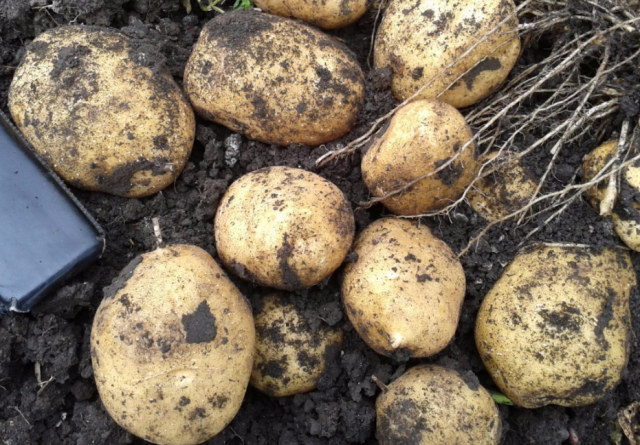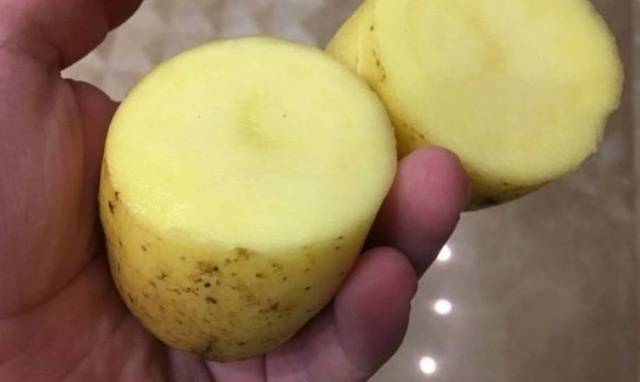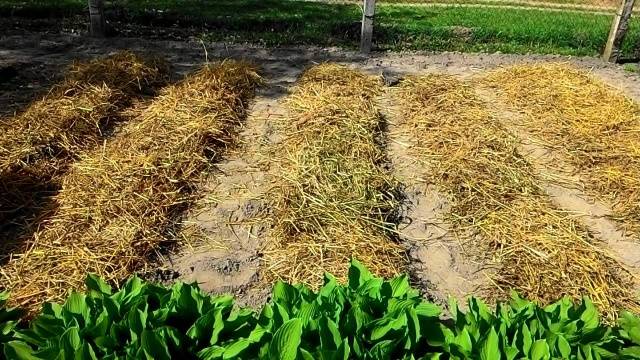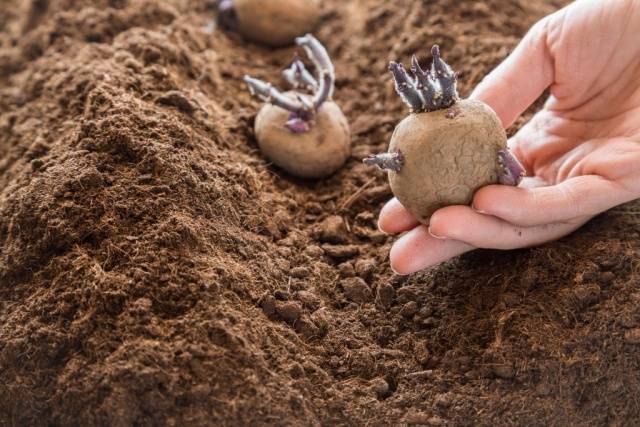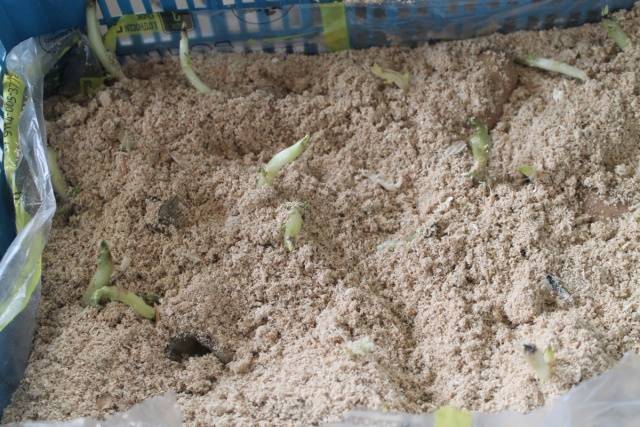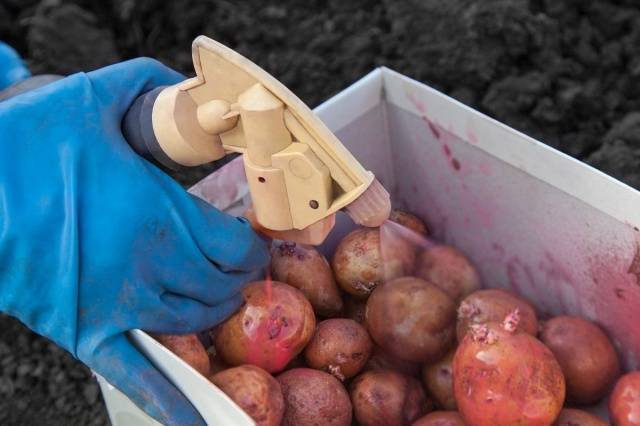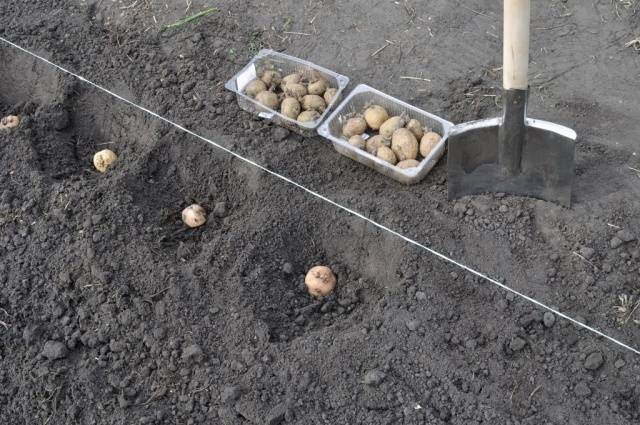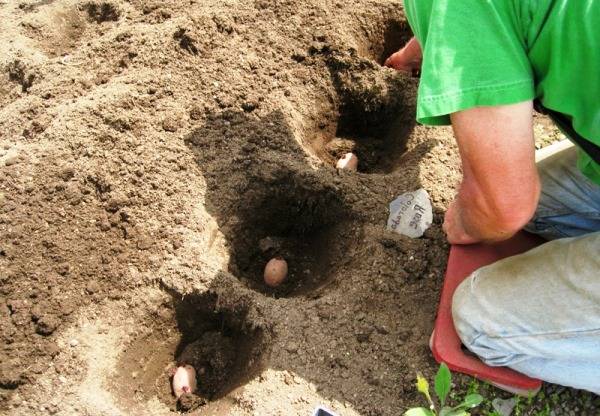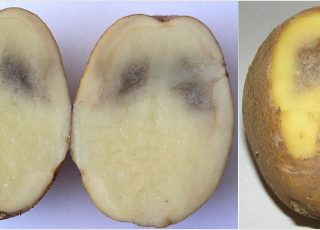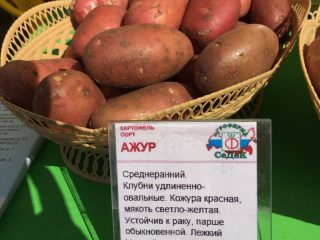Content
New potatoes are one of the best summer delicacies. As is known, for storage and late varieties of potatoes are most suitable for use in winter. And in order to grow tasty, tender and appetizing young tubers, it is best to plant one of the early ripening potato varieties on the plot. Such potatoes will ripen within 45-50 days after planting - already in June the summer resident will be able to dig up bushes and cook tubers from his own garden bed. One of the popular varieties in Russia with a short growing season is the Zorachka potato. This crop is young, potatoes are zoned for temperate climates, produce consistently high yields and delight with a pleasant taste.
Reviews, photos, and descriptions potato varieties Zorachka are given below. From this article you can learn about all the advantages of culture and become familiar with its disadvantages. For beginning gardeners, we will talk about the technology of growing early potatoes.
Characteristics
The Zorachka potato variety is the brainchild of Belarusian breeders. This crop was included in the State Register in 2013 and is recommended for cultivation in the Central region of Russia, Belarus, Ukraine and Moldova. The most suitable climate for the variety is moderate, without prolonged drought and excessive heat.
Characteristics of potatoes of the Zorachka variety:
- the ripening period of young tubers is 45 days, until technical full maturity it should take 70-75 days from the moment of planting;
- The purpose of potatoes is table - Zorachka is good in the form of young tubers, suitable for boiling and preparing salads;
- bushes are compact, of medium height - up to 60 cm maximum;
- shoots are semi-erect, quite powerful;
- the leaves are medium to large in size, dark green in color, and have a wavy edge;
- the corollas are medium in size, the flowers in them are collected tightly, the color of the inflorescences is light blue;
- Zorachka's tubers are oval-shaped, their surface is smooth;
- the peel is dark yellow;
- the pulp is light yellow;
- there are few ocelli, the distance between them is large, they are small and shallow;
- Zorachka’s taste is good, rich and not watery;
- the starch content in potatoes is low – 12-14%;
- the average weight of commercial tubers is 90-120 grams (large potatoes);
- Each bush develops about 9-10 marketable potatoes;
- the keeping quality of the Zorachka variety is estimated at 96%, which is very good for an early-ripening variety (the tubers can be stored until the end of January at a temperature of 8-10 degrees);
- transportability is good; thanks to the low percentage of starch, potatoes are rarely damaged;
- excellent commercial qualities - Zorachka is perfect for growing on an industrial scale for the sale of young tubers;
- The yield of the Belarusian potato variety is high - 35-70 tons per hectare (depending on climate, soil composition and amount of watering);
- the variety is quite resistant to external factors, but does not tolerate drought relatively well - Zorachka will have to be watered regularly;
- These potatoes can be grown on almost any soil, the only requirement is that the acidity of the soil must be neutral;
- Zorachka potatoes have good immunity to golden nematode and cancer, average resistance to late blight of tubers and leaves is observed, the variety is afraid only of the Y-virus.
Advantages and disadvantages
The description of the Zorachka variety demonstrates that this potato has many more positive characteristics than disadvantages. Reviews from domestic gardeners and summer residents speak about the same thing - Zorachka has proven itself well in the country’s gardens and, despite its “young age,” the variety is already very popular.
Potato Zorachka has the following advantages:
- early ripening - already on the 45th day after planting you can dig up the first bushes;
- high yield - figures of 40-50 tons per hectare are quite enough even for farms and large industrial scales;
- the variety is unpretentious to climate and soil composition;
- This potato requires very simple care (watering, fertilizing, processing);
- Zorachka’s taste, as for an early variety, is very good and rich;
- tubers tolerate transportation well and are not afraid of mechanical damage;
- if desired, the Zorachka harvest can be stored - these potatoes will withstand 4-5 months in the basement;
- The presentation and quality of the variety are good.
Belarusian potatoes have no major disadvantages. Some farmers leave negative reviews about the Zorachka variety only because it requires frequent watering and, accordingly, regular loosening of the soil between the rows.
In practice, it turns out that it is enough to mulch the potato beds - then the moisture will evaporate less and there will be no need to loosen the soil.
Growing technology
Zorachka is an unpretentious potato variety, quite suitable for beginning summer residents and inexperienced gardeners. It is recommended to plant early-ripening potatoes in early May, when the soil at a depth warms up to 7-10 degrees.
Each owner has his own tactics for germinating potato tubers. Experienced farmers recommend using this scheme:
- Starting in the fall, prepare seed potatoes and separate them from the rest of the tubers. To do this, the thickest and largest bushes are selected, dug up, and the tubers are left for ventilation.
- Only healthy and undamaged potatoes are selected for planting. The optimal size of planting tubers is the size of a chicken egg.
- The tubers should be ventilated and dried for several days, for which they are placed in a cool place in the fresh air (it is important to avoid direct sunlight on the potatoes).
- Planting tubers of the Zorachka variety should be stored in the basement, but be sure to separate them from the rest of the crop.
About two weeks before planting, the planting potatoes are brought into a warm place and laid out in one layer in wooden boxes. It is advisable to sprinkle the tubers with fresh sawdust and spray the sawdust with water daily. In a humid and warm environment, Zorachka potatoes will germinate faster.
Immediately before planting, tubers of the Zorachka variety must be treated with fungicidal preparations, since this potato has weak immunity to late blight.
To improve productivity, experienced summer residents advise using ordinary wood ash. The potatoes are first sprayed with water, then sprinkled with ash and the tubers are allowed to dry completely.
Planting potatoes
It is advisable to prepare the area before planting Zorachka potatoes. By the way, potato beds should be located in an open, sunny place. It’s good if legumes, flax, perennial herbs, cabbage, carrots or cucumbers grew there before.
The area needs to be dug up in advance, scattering humus, compost or rotted chicken droppings over the entire area. If the soil on the site is highly acidic, in addition to fertilizers, lime or dolomite flour is also scattered.
The recommended planting scheme for the Zorachka variety is as follows:
- 35-40 cm between bushes;
- 55-60 cm for row spacing;
- 7-10 cm – depth of planting of tubers.
During planting, you can additionally fertilize the soil. Each hole must be filled nutritional mixture, which should be prepared from the following components:
- 150-200 grams of peat;
- a tablespoon of wood ash;
- a teaspoon of superphosphate (it is better to take a double dose).
The finished mixture of all components is combined with the ground and the resulting composition is added one handful at a time to the planting holes.
Caring for Belarusian potatoes
It is not difficult to care for the Zorachka variety, because this potato is unpretentious. However You need to follow some rules and take into account cultural characteristics:
- You need to start watering only after the green bushes have sprouted. The soil should be moistened regularly, but not too much. Before each watering, the soil must be loosened.
- The Zorachka variety needs to be hilled. The first hilling is performed when the bushes grow to 20 cm. A repeat procedure is needed 14-16 days after the first.
- Zorachka potatoes are fertilized several times a season: after the bushes germinate, the ground is watered with a solution of urea and complex mineral fertilizer; during the period of bud formation, the potatoes need potassium and phosphorus (potassium sulfate must be mixed with wood ash); during the flowering period, the bushes are watered with a solution of nitrophoska and superphosphate (important do not wet the leaves).
- If prevention was carried out correctly, the Zorachka variety may not require treatment against infections and pests. If necessary, the bushes are sprayed with insecticides and fungicides, but this can only be done before the potatoes bloom.
Review
Conclusion
This article provides comprehensive information about the Zorachka potato, its characteristics, taste, yield, all the strengths and weaknesses of the variety are listed here. Every farmer knows that the main key to successful cultivation is the right variety. So, all that remains is to make a choice!

